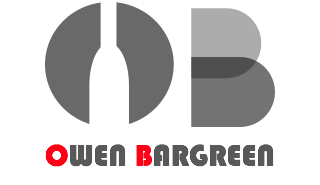One of the inspired producers of new world Pinot Noir, Ross Cobb is the talented winemaker behind his beautiful lineup of Cobb Pinot Noirs. While hardly new to the game, his wines are truly one to watch for as they show serious terroir with amazing viscosity and range. Ross is the son of David and Diane Cobb who with Ross founded Cobb back in the 2001, sourcing from their estate Coastlands Vineyard that dramatically faces the Pacific Ocean. Ross is a talented winemaker who has traveled the world to learn about winemaking and focus on crafting world class Pinot Noir. I think you will very much enjoy hearing about his story in wine. Here is my exclusive interview with Ross Cobb, winemaker at Cobb Wines.
WWB: How were you initially inspired to become a winemaker?
RC: My parents, David and Diane Cobb, bought a bare piece of land on the West Sonoma Coast in 1988 and established the 14-acre Coastlands Vineyard, including the house and infrastructure from ground up. This was at the same time I left for college at UC Santa Cruz. While there, I decided to change my major from Biology to Environmental Studies and focused on Sustainable Agriculture and Agro-ecology. My final project focused on soil science and I analyzed the Coastlands’ 1906 block of soil before planting. I started working on the vineyard each summer and after graduation I got a job in wine and worked my way up! After seven years working for three wineries, I made my first to trip to France (several regions of Burgundy and Rhone), Spain, and Portugal. This first trip inspired me to start our family wine label, which we did in 2001. I continued traveling to France, Italy, Spain, Portugal, Hungary, Switzerland, Austria, and Bulgaria, and each trip has opened my mind to different techniques in viticulture and helped me define my own personal style of winemaking.
WWB: How are you able to extract the incredible sense of salinity and minerality into your beautiful Pinot Noir wines?
RC: The vineyards of Coastlands, Emmaline Ann, and Rice-Spivak form the winery’s core production, and all fall within an unofficial subregion of the western Sonoma Coast known as Freestone-Occidental. Yields hover between 1.5- and 2-tons per acre. The coastal proximity is responsible for the fine-grained salinity, giving these wines a soft, supple spine with a weightless, cleansing lift.
WWB: Your 2016 Cobb ‘Rice-Spivak’ Pinot Noir (WWB, 95) is one of the most impressive Pinots out of California that I have sampled in the past year. Can you talk about how you craft this stunning new wine that screams terroir and shows insanely good range?
RC: The goal at Cobb is to produce delicate and pretty wines that retain structure. Approximately 40% whole-cluster fermentation is used, and the wines are aged anywhere from 22-34 months in the barrel, the first year on gross lees, the second on fine lees. Around 35% of the François Frères and Remond barrels are new, and the bottled wines are held for two to four years before release. The Rice-Spivak grapes are particularly complex due to the cold winds blowing in from Tomales Bay and Bodega Bay to the west. The 300-foot elevation rolling hills are composed of Goldridge series soil, but have a significant amount of organic matter and there is a volcanic ash character unique to the soil at Rice-Spivak, which marks the wine with a flint note and richness on the palate.
WWB: What are some of your favorite wines of the world and how do you think that Sonoma Coast Pinot has been evolving over the past decade?
RC: Having one of the first West Sonoma Coast Pinot Vineyards in the family, we were pioneers on this journey. I worked with Williams Selyem from 1998-2000, Flowers from 2000-2008, and Hirsch from 2009-2015, solidifying my understanding of the Sonoma Coast and its potential in the wine world. California Pinot Noir is never going to be Burgundy, and vice-versa, but there’s room for both. As Burgundy Pinot prices go through the roof, other markets, like ours, are expanding. What were once considered ‘alternatives’ to Burgundy are now established and earning acclaim of their own. It was made abundantly clear to me that it’s possible to grow and produce Pinot Noir without any comparison to Burgundy in Sonoma and I think it is only going to get better. My favorite wine from the west Sonoma coast is Ted Lemon’s Littorai and the Burgundy Pinots that inspired me are still among my favorites as well: Bruno Clair, Francoise and Rene Leclerc, Silvain Pataille, Mugneret-Gibourg, and Marchand-Tawse in Cote de Nuits.

